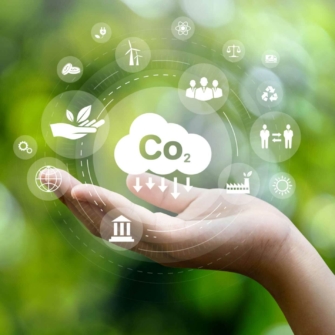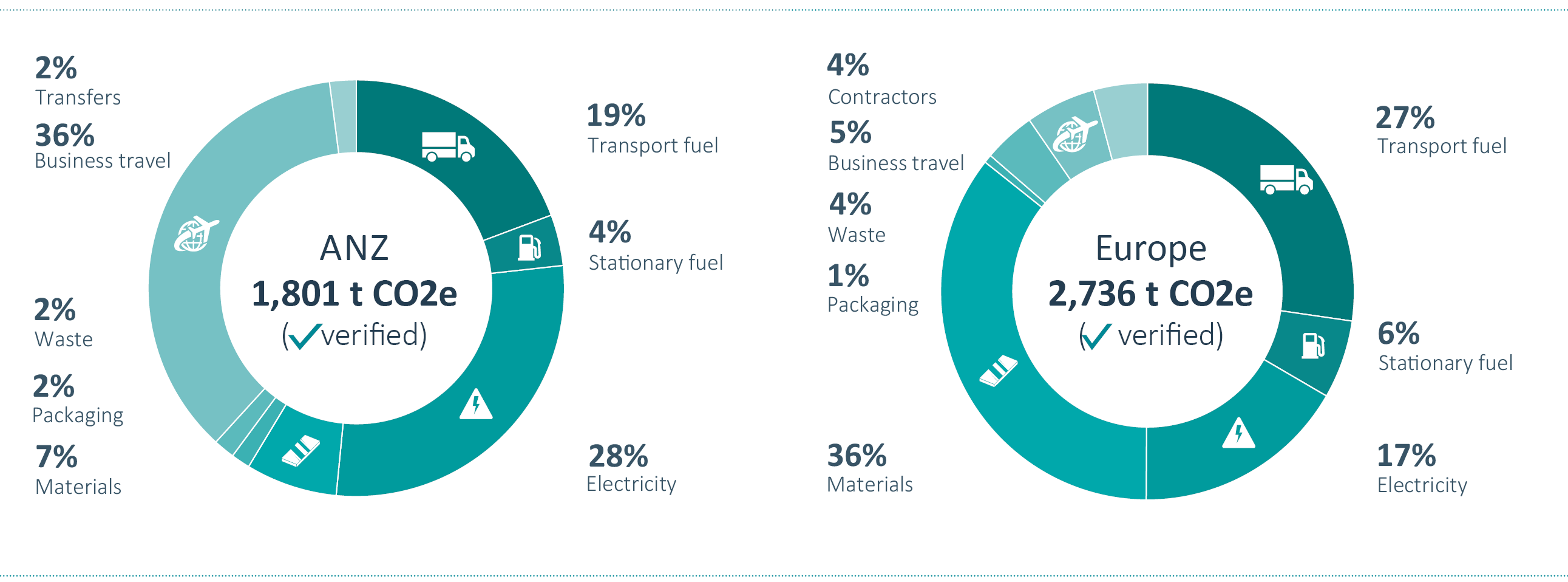Select your region / language
Delivering for our planet: Understanding our carbon emissions
In 2021, Scott Technology, with support from New Zealand-based sustainability experts, Tadpole, embarked on a project to measure and understand its carbon emissions across the global business. Europe and ANZ (Australia and New Zealand) were selected as the initial markets for scoping, capturing 70% of the business, with China and the US to follow in FY23.

Europe and ANZ (Australia and New Zealand) were selected as the initial markets for scoping, capturing 70% of the business, with China and the US to follow in FY23.
Getting the business engaged in the process was the initial priority for Scott. President of Scott Europe and North America, Aaron Vanwalleghem, says that having people understand the ‘why’ was an important foundation.
“Working with Tadpole, we ran a series of educational workshops that our employees could attend. We gave an overview of global warming, greenhouse gases, local context, what governments are doing and ended with how Scott is going to play its part in the long-term future of our planet.”
Smaller teams in each market were then engaged in the boundary-setting process. Following the ISO 14064-1 Standard for the quantification and reporting of greenhouse gas emissions and removals, this involved understanding each market’s physical boundaries and emissions sources. The output was a clear plan for exactly what data was needed to be collected by each market.
“Because 2020 and 2021 were impacted by COVID-19, we needed to use FY19 as our base year for data collection to present the most accurate picture of a typical operating year,”
Scott measured three types of emissions: direct greenhouse gas (GHG) emissions (Scope 1), indirect GHG emissions from purchased energy (Scope 2) and indirect GHG emissions from other sources (Scope 3). The specific emissions sources are detailed in the table below.
Scope 1
Direct greenhouse gas (GHG) emissions
- Transport fuel combusted in Scott leased and owned vehicles
- Transport fuel combusted in rental vehicles
- Fuel used in forklifts
- Stationary fuel used in appliances or equipment
- Refrigerant gases
Scope 2
Indirect GHG emissions from purchased energy
- Electricity used in buildings and for electric forklifts (where relevant)
Scope 3
Indirect GHG emissions from other sources
- Domestic and international air travel
- Accommodation associated with business travel or project installations
- Manufacturing raw materials
- Purchased packaging
- Contracted services (use of contractors)
- Treatment of waste
- Distribution / line losses (electricity + gas)
- Well to tank fuel emissions
“Collecting the required data and doing so retrospectively, was a big undertaking,”
“We’re extremely proud of how our people really got behind our desire to do better as a business. The collection process required commitment and effort from many people from right across the business, additional to their usual responsibilities, to enable us to understand our carbon footprint. The engagement has been incredible, and we’d like to thank and recognise the many people who have contributed.”
As with anything new, there were a few challenges along the way
“While using FY19 as a baseline made complete sense to eliminate the pandemic factor, it also presented some limitations,”
“Freight data included in our preliminary carbon footprint is limited to transfers between our sites. Going forward, we have developed a process that will capture inwards and outwards freight data. These emissions will be included in our 2023 carbon footprint.”
External audit partners in Europe and ANZ have verified the processes and data used to develop Scott’s preliminary carbon footprints, see below.

“We have measured our emissions to better understand the scale of our carbon footprint, the impact of our actions and, ultimately, to identify our opportunities for improvement. From the work we have completed to date, we have already recognised some opportunities for reduction improvements. For example, our electricity usage, air travel, accommodation and travel in company cars. These will be obvious starting points in our emissions reduction plan.”
The business anticipates that the remaining carbon footprints for China and US will be completed and verified by the end of 2022.
By mid FY23, Scott will be in a strong position to share the carbon footprint for the total Scott business, as well as our objectives and actions for reduction.
Taskforce on Climate-related Financial Disclosures (TCFD) reporting
At Scott we recognise the need for climate-related disclosures and the long-term value created by better managing our climate-related risks and opportunities.
We have measured the GHG emissions of our operations in New Zealand, Australia and Europe and had these independently assured. The next key step is for us to clearly establish our climate-related risks and opportunities and report these in line with the requirements of the Task Force on Climate-related Financial Disclosures (TCFD) and New Zealand’s External Reporting Board (XRB).
In next year’s report, we will provide more information about Scott’s climate-related risks and opportunities, how they affect us and, in turn how our operations affect climate change. This will include scenario analysis, our process to implement and identify risks and how we integrate this into the overall risk management framework. We will also identify and report the key metrics associated with our most material climate impacts.
Leading a Sustainable Future
To learn more about Scott's commitment to Sustainability, and our promise for delivering for our people, purpose and planet, view our sustainability section on the website.



